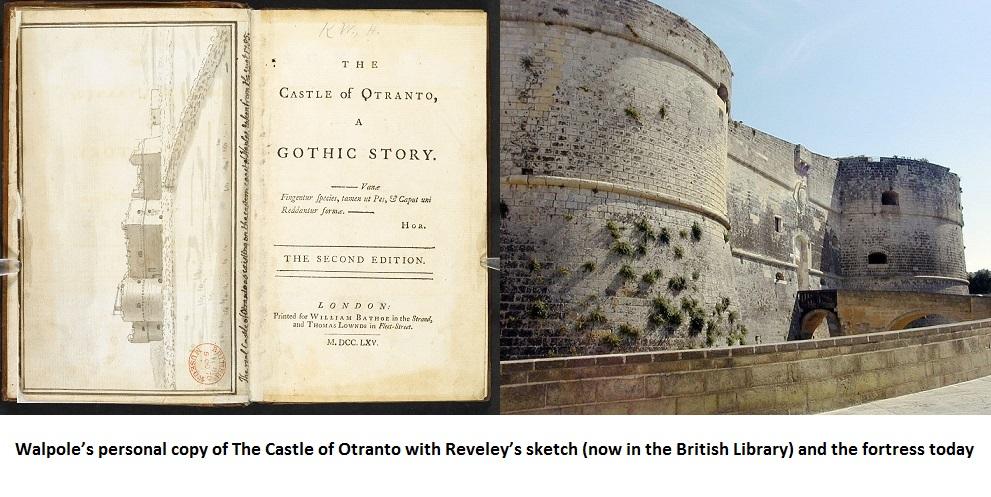THE REAL CASTLE OF OTRANTO
In 1765, Horace Walpole published The Castle of Otranto the first ‘Gothic’ novel. It was Walpole himself who subtitled his ghostly tale of doomed knights and distressed damsels "a Gothic Story to restore the qualities of imagination and invention to contemporary fiction" and though he chose the location of his castle at random, there is a real Castle of Otranto at the very tip of Italy’s heel.
The port of Otranto, which controls the entrance to the Adriatic Sea, was one of the last Italian-Byzantine cities to be conquered by Robert Guiscard and it was this Norman adventurer who built the first castle in 1068. In 1228 Robert’s fortress, along with many others in Southern Italy, was rebuilt and strengthened by the Hohenstaufen Holy Roman Emperor Frederick II but the castle of Otranto failed to repel an attack by the Ottoman Turks in 1480.
The brutal Sack of Otranto was to have begun the conquest of Italy by Mehmed II, the ‘conqueror sultan’ who’d extinguished the last embers of the Byzantine Empire in 1453, but Mehmed’s death in 1481 plunged the Ottoman empire into civil war and a Neapolitan army soon drove the Turks out of Italy. Otranto’s castle had been badly damaged during the 13 months of Turkish occupation and though it was repaired by Alphonso, the Aragonese Duke of Calabria, it was later recaptured, albeit briefly, by the infamous Barbary corsair Barbarossa in 1537.
In 1578 artillery platforms were added on the seaward side of the castle’s medieval towers and further modernisations were made throughout the 17th and 18th Centuries. During the Napoleonic Wars the castle was home to a French garrison, who had orders to watch the movements of the British Mediterranean fleet, and the area was a hotbed of revolution during the 19th Century’s struggle to unify Italy. In the First World War, the British constructed a barrier of ships linked by nets across the 45 mile wide Straits of Otranto, which kept the Austrian fleet’s surface ships (though not their U-Boats) bottled up in the Adriatic, and the city seems to have escaped the Second World War’s Battle of the Otranto Straits relatively unscathed.
Though Walpole never visited Otranto his friend, the architect Willey Reveley, presented him with a watercolour sketch he’d made of the city’s actual fortifications and Walpole was so delighted he included it as a frontispiece in subsequent editions of his book. The Castle of Otranto quickly became a best seller and though it’s popularity was later eclipsed by Frankenstein and Dracula it did launch the craze for Gothic fiction which persists to this day.
